GardenersHelper
In Memoriam
- Messages
- 6,344
- Name
- Nick
- Edit My Images
- Yes
My thanks to David (davholla) for nudging me to go and have another look at one of our Manhonias, which I had assumed was too far gone to be worth photographing at the moment. [David, turns out I was wrong about what Mahonias we have. My wife tells me that the one in the front garden is Mahonia japonica and the one here is Mahonia Media x Charity.]
I went out between rain showers this afternoon to look at the Mahonia bush in our back garden and take some photos of it. It turned out that I only had 20 minutes before the rain started again but despite this it turned out to be a rather instructive little exercise.
At the moment I am rather keen on stacking for botanical photos, using Panasonic’s post-focus facility to capture 6K videos to use as the source of JPEGs for stacking in Helicon Focus, which automatically extracts JPEGs from the videos. Today the conditions were poor, with a breeze and light that was not very bright. However, I quite often work in conditions like this so I just carried on. I used a Panasonic G9 micro four thirds camera with an Olympus 60mm macro. I used a tripod to help stabilise the camera, but kept my hands on the camera as one does with a monopod. I find this gives me a good combination of stability and accuracy of framing, flexibility as to what I can reach and good speed of operation.
I tried five different views of parts of the mahonia bush and finally, by which time it was raining quite heavily with a strong gusty breeze, a fuchsia flower, in all capturing 33 videos in the 20 minute session. The attempt with the fuchsia was a write off because the flower was moving around so much the whole time. I managed to create stacks that looked ok for my purposes from four of the five mahonia scenes. The fifth mahonia scene was very similar to one of the others, just in landscape rather than portrait orientation, and because the portrait one had worked out ok but had been a bit tricky and time-consuming to process I didn’t bother with the landscape version.
So, after finishing off the stacks in Lightroom I ended up with these four images.
Image 1, Stack of 28 video frames, f/2.8, ISO 800, 1/320 sec, two stacks merged, one for the subject and one for the background.
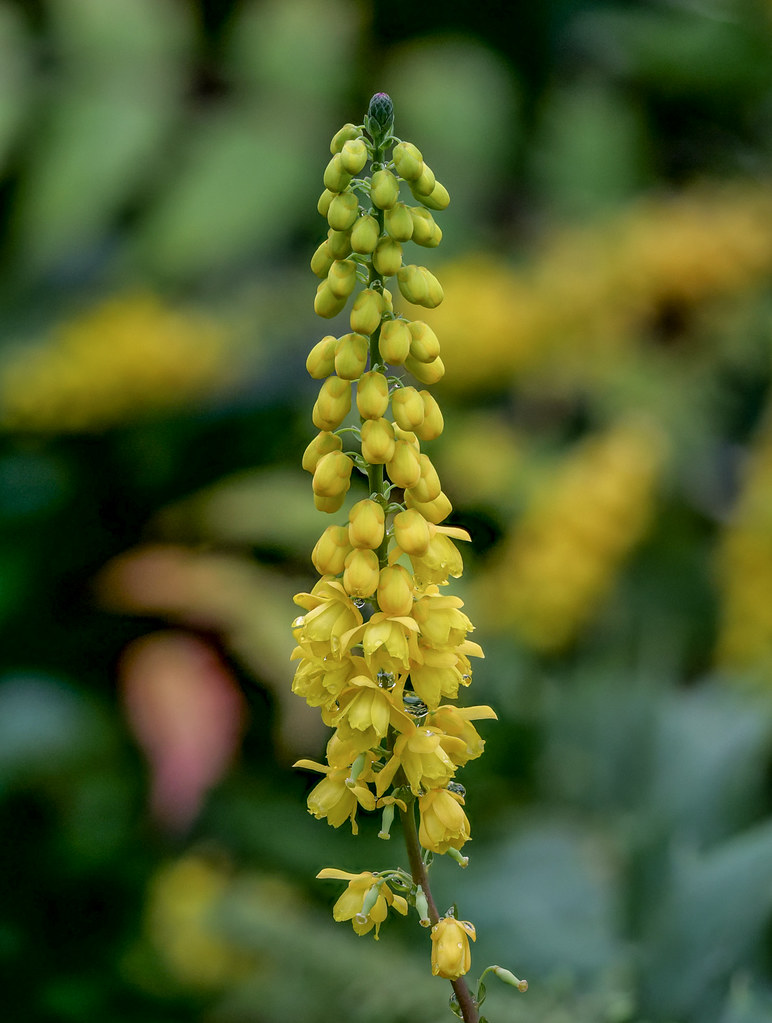
1416 1 2018_12_20 P1001126 G9+60 PF28 F2.8 ISO800 1-320 B4,2+outerB4,8 LR7 1400h by gardenersassistant, on Flickr
Image 2, Stack of 25 video frames, f/2.8, ISO 800, 1/160 sec, two stacks merged, one for the subject and one for the background.
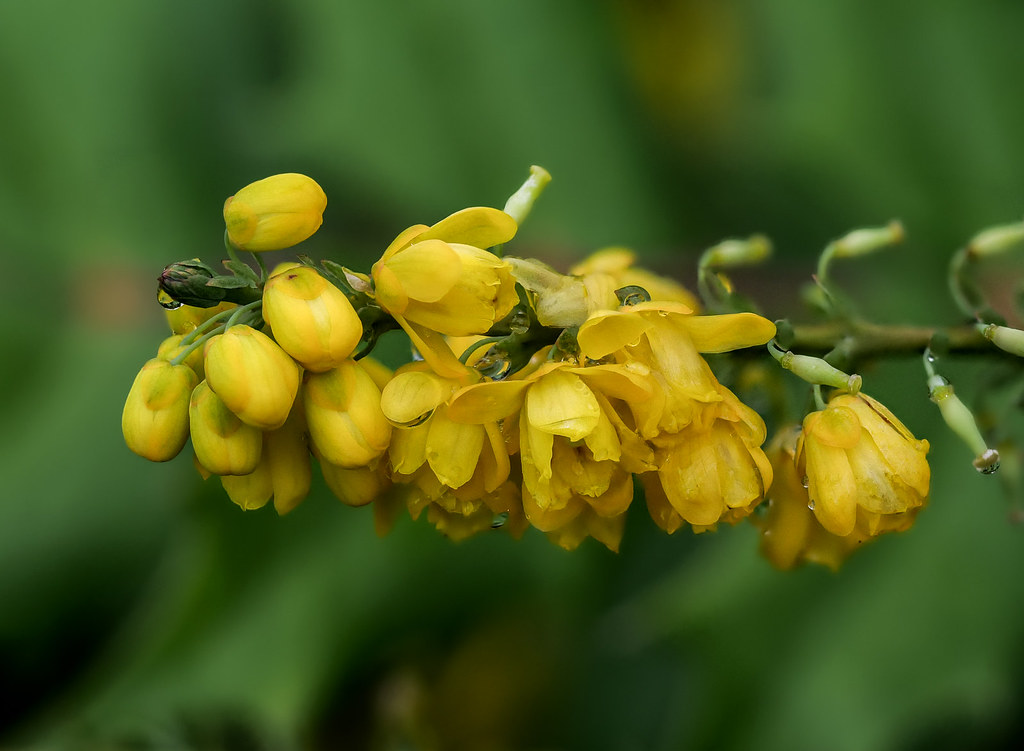
1416 2 2018_12_20 P1001151 G9+60 PF25 F2.8 ISO800 1-160 B4,2+outerA4,7 LR7 1400h by gardenersassistant, on Flickr
Image 3, Stack of 17 video frames, f/2.8, ISO 1000, 1/30 sec, single stack with some areas copied from individual source frames.
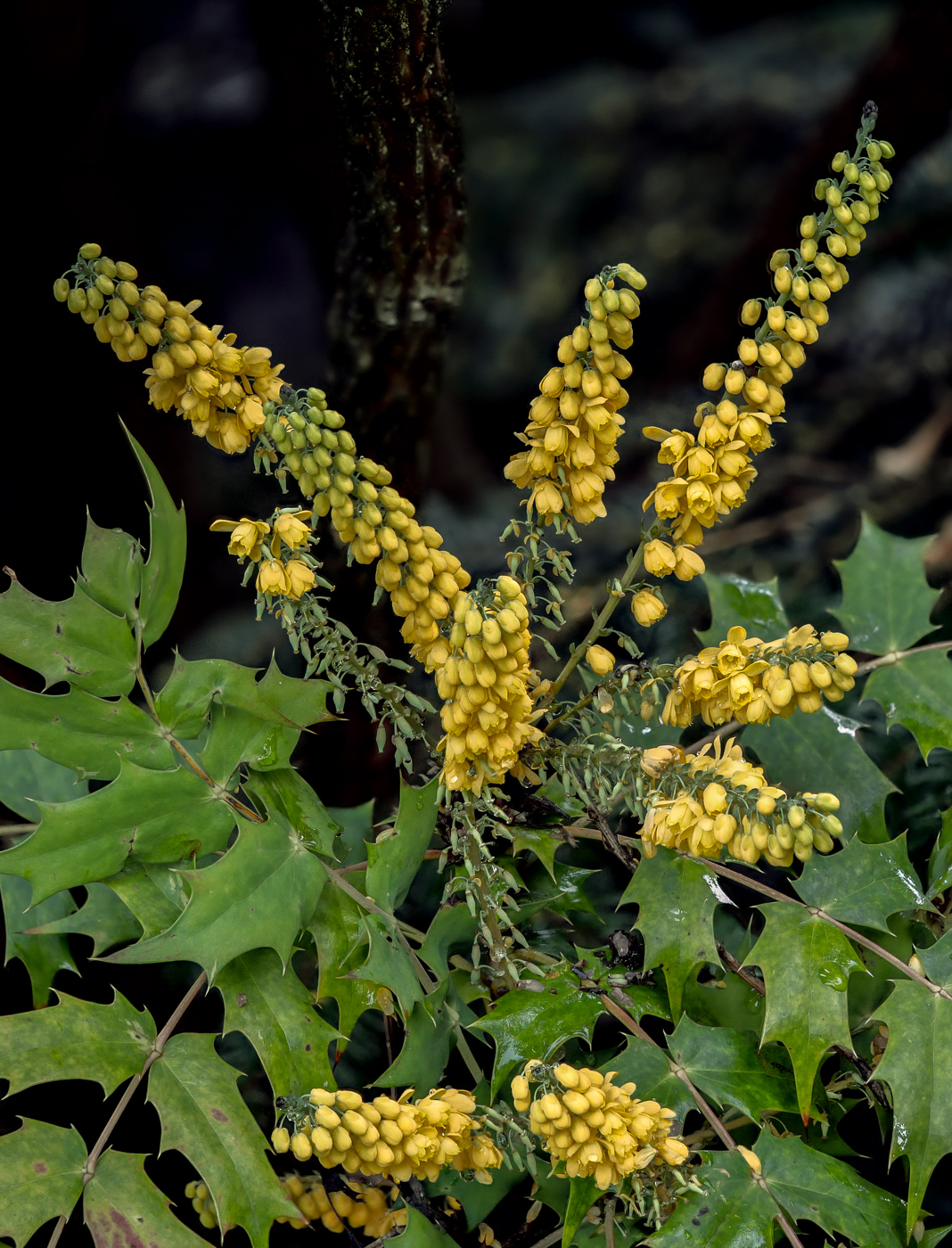
1416 3 2018_12_20 P1001158 G9+60 PF17 F2.8 ISO800 1-30 B4,2+i LR7 1400h by gardenersassistant, on Flickr
Image 4, Stack of 17 video frames, f/2.8, ISO 400, 1/200 sec, two stacks merged, one for the subject and one for the background.
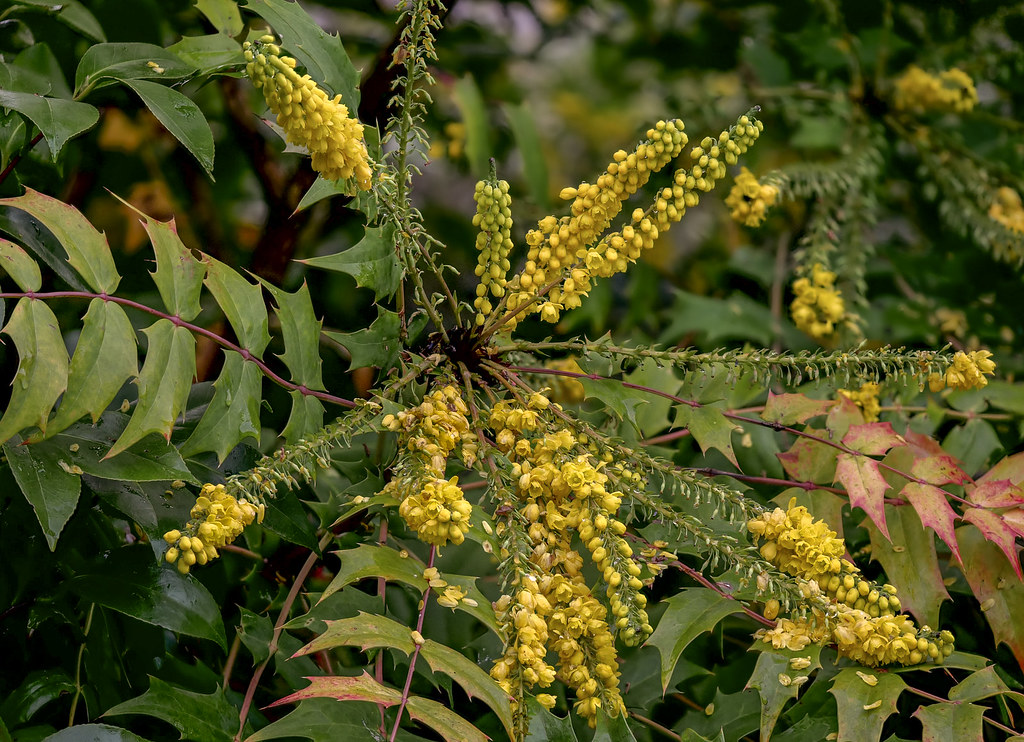
1416 4 2018_12_20 P1001145 G9+60 PF17 F2.8 ISO800 1-200 B4,2+outerA4,8 LR7 1400h by gardenersassistant, on Flickr
The first of these was easy to capture and process. The second was a bit difficult to capture, requiring to camera to be up almost as far as I could reach above my head and pointing down slightly, but it too was easy to process.
I found the third more interesting. It was in deep shadow, hence the shutter speed of 1/30 sec despite using f/2.8 and ISO 1000. As with the first two images, the breeze was blowing the stems around. However, for the first two images the single stem and all the flowers on it moved in unison, so even though there was some movement while the video was being captured the software was able to sort it out with no problem. With the third image though the breeze was blowing the stems around independent of one another. This is bad news for stacking. The software had lots of problems with it and I had to spend some time painting in areas from individual source images. I wouldn’t be surprised if you could find some areas I missed. Still, I did manage to get an image that was good enough for my purposes. I don’t think that would have been the case with a single image because the depth of field would have been much too narrow for my liking at f/2.8, and with an aperture small enough to provide my preferred depth of field the shutter speed would have been much too slow given the breezy conditions.
This issue was illustrated nicely with the fourth image. For that scene I decided to capture some stills. I used aperture bracketing a couple of times. I often do this for botanical subjects. It lets me capture sets of 7 images from f/2.8 to f/22. Then when doing the processing I can choose the one I like best in terms of the balance between the amount of the subject that is in focus and the rendition of the background. This does involve a compromise in terms of ISO (because all 7 are captured with the same ISO), and it means I often end up picking one which used a higher ISO than necessary. Still, I am content to use these higher than necessary ISOs and I like the tradeoff of fast working and having a good set of options to choose from.
When I came to process these stills I realised that I could not produce a result that I would want to use from any of them. With the larger apertures the depth of field was too narrow. With the smaller apertures the shutter speeds were too slow, causing loss of sharpness from movement of the subject. And the backgrounds were more in focus that I liked with the smaller apertures, with little isolation of the subject. Here are three of the images from one of the aperture bracket sets.
f/5.6
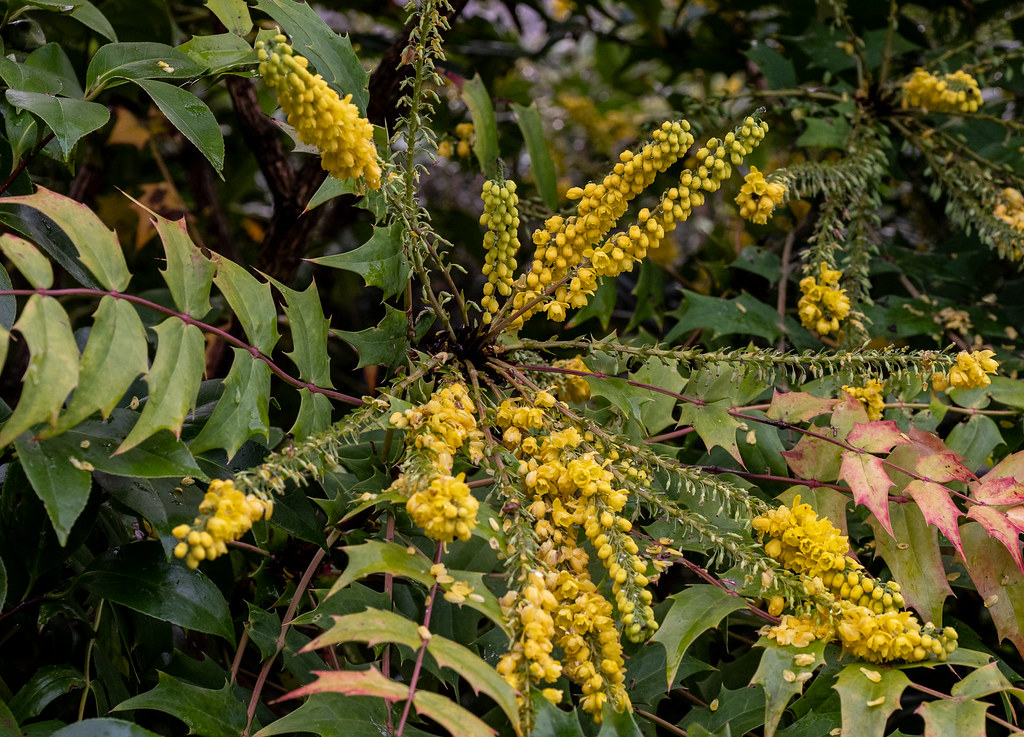
1416 4c1 F5.6 P1001139 LR7 1400h by gardenersassistant, on Flickr
f/11
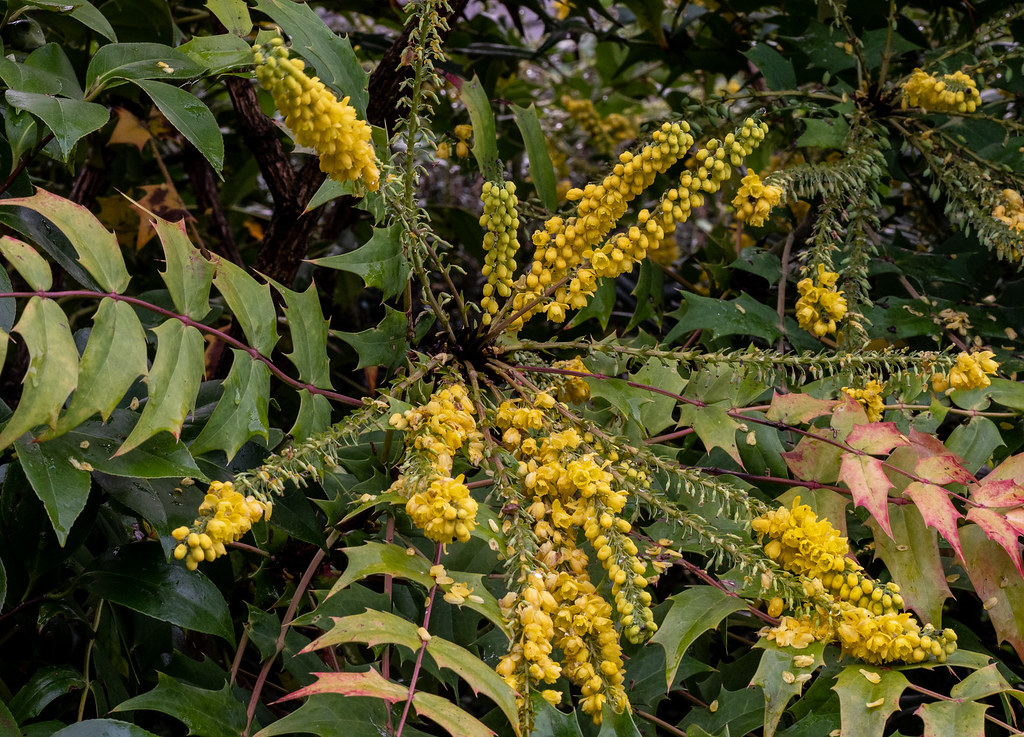
1416 4c2 F11 P1001141 LR7 1400h by gardenersassistant, on Flickr
f/22
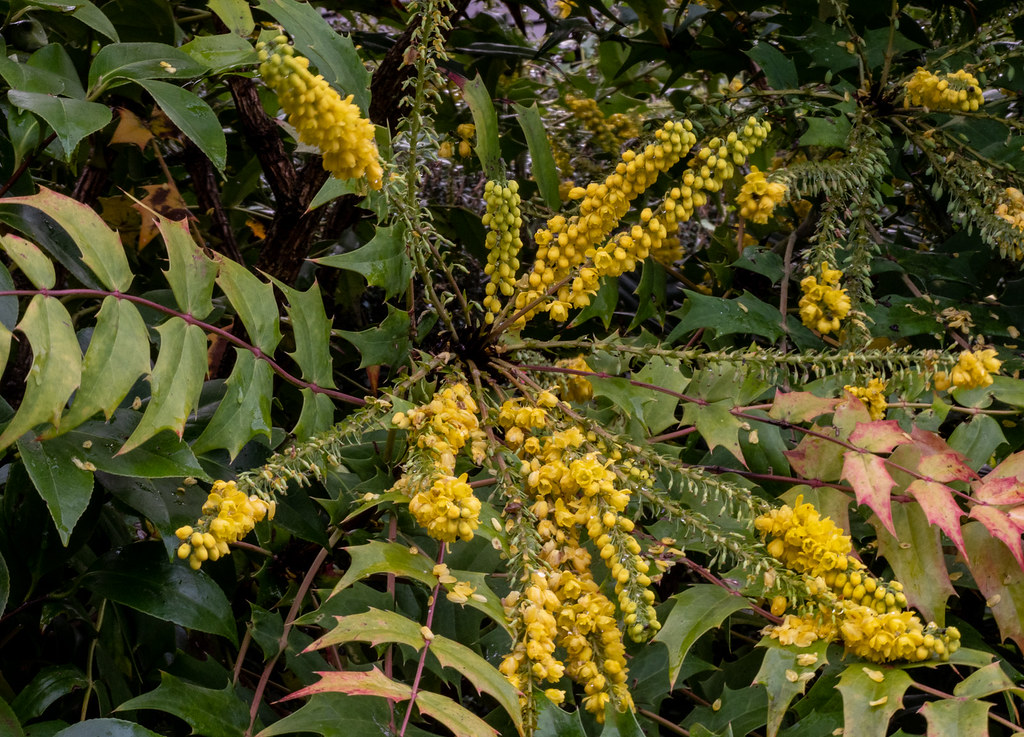
1416 4c3 F22 P1001143 LR7 1400h by gardenersassistant, on Flickr
For my taste the best of them were around f/11. However, a comparison of an f/11 version with the stacked version was very revealing. To my eye the stacked version was clearly preferable, both in terms of the sharpness/detail of the subject and also its isolation from the background.
 1416 4b 2018_12_20 Compare-single-F11-with-stack-F2.8 by gardenersassistant, on Flickr
1416 4b 2018_12_20 Compare-single-F11-with-stack-F2.8 by gardenersassistant, on Flickr
So in quite unpromising circumstances I had managed to produce an image of that scene which looked ok for my purposes, and in circumstances where I didn’t manage to produce anything I would want to use by capturing single images. I have no intention of switching entirely to stacking – I prefer the look of single images some of the time, and sometimes it is possible to get usable results with single images in circumstances when stacking is impractical, for example when the light is good but there is a strong breeze. But I did find it interesting to have a practical demonstration of circumstances in which stacking is a more practical proposition. I have suspected this was the case but had not until now demonstrated it to my own satisfaction.
I went out between rain showers this afternoon to look at the Mahonia bush in our back garden and take some photos of it. It turned out that I only had 20 minutes before the rain started again but despite this it turned out to be a rather instructive little exercise.
At the moment I am rather keen on stacking for botanical photos, using Panasonic’s post-focus facility to capture 6K videos to use as the source of JPEGs for stacking in Helicon Focus, which automatically extracts JPEGs from the videos. Today the conditions were poor, with a breeze and light that was not very bright. However, I quite often work in conditions like this so I just carried on. I used a Panasonic G9 micro four thirds camera with an Olympus 60mm macro. I used a tripod to help stabilise the camera, but kept my hands on the camera as one does with a monopod. I find this gives me a good combination of stability and accuracy of framing, flexibility as to what I can reach and good speed of operation.
I tried five different views of parts of the mahonia bush and finally, by which time it was raining quite heavily with a strong gusty breeze, a fuchsia flower, in all capturing 33 videos in the 20 minute session. The attempt with the fuchsia was a write off because the flower was moving around so much the whole time. I managed to create stacks that looked ok for my purposes from four of the five mahonia scenes. The fifth mahonia scene was very similar to one of the others, just in landscape rather than portrait orientation, and because the portrait one had worked out ok but had been a bit tricky and time-consuming to process I didn’t bother with the landscape version.
So, after finishing off the stacks in Lightroom I ended up with these four images.
Image 1, Stack of 28 video frames, f/2.8, ISO 800, 1/320 sec, two stacks merged, one for the subject and one for the background.

1416 1 2018_12_20 P1001126 G9+60 PF28 F2.8 ISO800 1-320 B4,2+outerB4,8 LR7 1400h by gardenersassistant, on Flickr
Image 2, Stack of 25 video frames, f/2.8, ISO 800, 1/160 sec, two stacks merged, one for the subject and one for the background.

1416 2 2018_12_20 P1001151 G9+60 PF25 F2.8 ISO800 1-160 B4,2+outerA4,7 LR7 1400h by gardenersassistant, on Flickr
Image 3, Stack of 17 video frames, f/2.8, ISO 1000, 1/30 sec, single stack with some areas copied from individual source frames.

1416 3 2018_12_20 P1001158 G9+60 PF17 F2.8 ISO800 1-30 B4,2+i LR7 1400h by gardenersassistant, on Flickr
Image 4, Stack of 17 video frames, f/2.8, ISO 400, 1/200 sec, two stacks merged, one for the subject and one for the background.

1416 4 2018_12_20 P1001145 G9+60 PF17 F2.8 ISO800 1-200 B4,2+outerA4,8 LR7 1400h by gardenersassistant, on Flickr
The first of these was easy to capture and process. The second was a bit difficult to capture, requiring to camera to be up almost as far as I could reach above my head and pointing down slightly, but it too was easy to process.
I found the third more interesting. It was in deep shadow, hence the shutter speed of 1/30 sec despite using f/2.8 and ISO 1000. As with the first two images, the breeze was blowing the stems around. However, for the first two images the single stem and all the flowers on it moved in unison, so even though there was some movement while the video was being captured the software was able to sort it out with no problem. With the third image though the breeze was blowing the stems around independent of one another. This is bad news for stacking. The software had lots of problems with it and I had to spend some time painting in areas from individual source images. I wouldn’t be surprised if you could find some areas I missed. Still, I did manage to get an image that was good enough for my purposes. I don’t think that would have been the case with a single image because the depth of field would have been much too narrow for my liking at f/2.8, and with an aperture small enough to provide my preferred depth of field the shutter speed would have been much too slow given the breezy conditions.
This issue was illustrated nicely with the fourth image. For that scene I decided to capture some stills. I used aperture bracketing a couple of times. I often do this for botanical subjects. It lets me capture sets of 7 images from f/2.8 to f/22. Then when doing the processing I can choose the one I like best in terms of the balance between the amount of the subject that is in focus and the rendition of the background. This does involve a compromise in terms of ISO (because all 7 are captured with the same ISO), and it means I often end up picking one which used a higher ISO than necessary. Still, I am content to use these higher than necessary ISOs and I like the tradeoff of fast working and having a good set of options to choose from.
When I came to process these stills I realised that I could not produce a result that I would want to use from any of them. With the larger apertures the depth of field was too narrow. With the smaller apertures the shutter speeds were too slow, causing loss of sharpness from movement of the subject. And the backgrounds were more in focus that I liked with the smaller apertures, with little isolation of the subject. Here are three of the images from one of the aperture bracket sets.
f/5.6

1416 4c1 F5.6 P1001139 LR7 1400h by gardenersassistant, on Flickr
f/11

1416 4c2 F11 P1001141 LR7 1400h by gardenersassistant, on Flickr
f/22

1416 4c3 F22 P1001143 LR7 1400h by gardenersassistant, on Flickr
For my taste the best of them were around f/11. However, a comparison of an f/11 version with the stacked version was very revealing. To my eye the stacked version was clearly preferable, both in terms of the sharpness/detail of the subject and also its isolation from the background.
 1416 4b 2018_12_20 Compare-single-F11-with-stack-F2.8 by gardenersassistant, on Flickr
1416 4b 2018_12_20 Compare-single-F11-with-stack-F2.8 by gardenersassistant, on FlickrSo in quite unpromising circumstances I had managed to produce an image of that scene which looked ok for my purposes, and in circumstances where I didn’t manage to produce anything I would want to use by capturing single images. I have no intention of switching entirely to stacking – I prefer the look of single images some of the time, and sometimes it is possible to get usable results with single images in circumstances when stacking is impractical, for example when the light is good but there is a strong breeze. But I did find it interesting to have a practical demonstration of circumstances in which stacking is a more practical proposition. I have suspected this was the case but had not until now demonstrated it to my own satisfaction.

